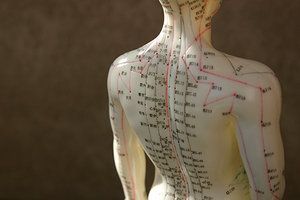Whether you accept it, avoid it or live somewhere in between, insurance coverage has become a defining issue for our profession. Patients increasingly expect to use their benefits, practitioners want to be compensated fairly for their time and expertise, and the system itself remains – at best – fragmented. The encouraging news is that coverage has expanded in meaningful ways. The challenging news is that reimbursement, across the board, remains inadequate.
Standardizing Acupuncture?
The international standardization conference was held this year in Shanghai, China (June) - this was the ninth plenary session. Meetings for technical committees, or working groups also took place at the conference.
Working group 1 is formulating standards for single herbs, they are also developing a barcode for each herb. The U.S. is particularly interested in the individual herb and interested in the standards that would involve American ginseng.
Working group 2 is formulating standards for formulas in the traditional medicine profession. Working group 3 has been working on international standards for the safe manufacturing and packaging for needles that are used in traditional medicine clinics.
Working group 4 is writing standards for other devices used in acupuncture medical settings around the world. Working group 5 is standardizing vocabulary. This type of standardization will help all research around the world, as well as practitioners. By speaking the same language we begin to form commonalities which can be used to further this medicine globally.
The purpose of these meetings was to discuss national standards for acupuncture and traditional complementary medicine globally. The standards are used to help with manufacturing, processing and building products for public consumption and use, and the standards are used to ensure that these products are clean and safe.
The U.S. has a committee consisting of people from the acupuncture profession. The most recent delegation to the meeting in Shanghai was composed of seven members, Eric Buckley (chair), Dan Winn, Christine Chang, Rachel Brooker from ANSI, Dr. Iman Majd from NCCAOM, Ted Klein, and myself.

Also in attendance at this meeting was Dr. Zhang Qi, from the World Health Organization (WHO). He discussed that the two organizations, both recognized globally (ISO and WHO), are working together for standardization, but should be conscious of not duplicating work.
In the U.S. are organizations working on standardization is called the American National Standards Institute. This agency was founded in 1918 and is referred to as ANSI. This agency has coordinated the development of voluntary consensus standards in the U.S. and has represented the ideas, views and needs of businesses, manufacturers, professions and other stakeholders who both need and use standards. ANSI represents the interests of more than 125,000 companies and 3.5 million professionals. Standards are formed globally and can be excepted and used in individual countries.



